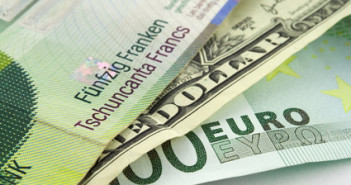The upcoming trading week could prove to be a challenging one, as important economic releases and geopolitical events take place throughout both quarter-end and a holiday-shortened trading week. It is fairly safe to assume liquidity will be at a premium from midweek onwards, making it particularly tricky to trade not only around US and Canadian trade balance figures on Thursday, but US Non-Farm Payrolls on Friday. Given market expectations around the first rate hike from the Fed have fragmented since the last FOMC meeting,Friday’s employment report will be closely eyed and set the tone for the greenback in the weeks ahead. Yellen’s speech in San Francisco before the weekend highlighted that wage growth and price inflation were not necessary to be confident inflation would move back to the Fed’s 2% target over time, though weakness in these indicators could keep the Fed on the sidelines longer than anticipated. Failure to look past just the headline reading on job creation could put traders on the wrong side of the market, though it is likely heightened volatility due to thin liquidity will create attractive opportunities for medium and long-term hedgers.
Investor sentiment has started the week in optimistic fashion, with global equities on their front-foot after the Governor of the People’s Bank of China hinted further monetary policy easing could be in the cards, as the accelerating drag in the first quarter has raised concern from policymakers. Governor Zhou said policymakers have scope to respond to the disappointing start to the year, hoping to insulate against a harder than necessary landing as the growth rate tumbles. The Shanghai Comp rallied 2.62% on its session in response to the stimulus rumors, with the positive price action filtering over to European equities, despite the fact that Greek reform negotiations continue to drag the cash-strapped nation closer to the brink of outright insolvency.
The stimulus rumors from the PBoC were unable to alleviate the downward pressure experienced in the hydrocarbon market before the weekend, with the Iranian nuclear talks taking precedent and the main driver behind the distinct offer tone in WTI and Brent. The risk premium associated with the conflict in Yemen is continuing to fade as the risk of disruption in oil shipments through the Bab el-Mandeb Strait is considered low, therefore putting the spotlight on the progression of a nuclear agreement with Iran, and the anecdotal stories of headway continues to weigh on prices, with front-month slipping into the mid-$48s.
As we get set for the opening bell in North America, equity futures are witnessing the bulls in firm control to start the week, signaling a positive open when the bell is rung. On the economic data front, personal income data out of the US for the month of February was released, showing income rose by more than expected at 0.4%, while consumption only rose by 0.1%, missing the median call for a 0.2% increase. While income and consumption data was mixed for the month of February, the Fed preferred measure of inflation, the core PCE index, rose more than expected to 1.4% on a y/o/y basis, giving Yellen further confidence prices are indeed firming. On the Canadian side of the 49th parallel, pricing data was also released by the way of producer and raw material prices. Both indicators saw healthy m/o/m gains in February, yet Raw Material prices are still down over 20% from twelve months ago, and one month of gains is unlikely to move the needle in terms of seeing overall CPI firm considerably in the coming months. The loonie has remained under pressure post-price data, with USDCAD looking comfortable at building on Friday’sgains as the pair puts in work above the 1.26 level. Attention for loonie traders now shifts to tomorrow’s GDP figures, and while recent comments from Poloz have suggested the BoC is in wait-and-see mode for the time being, a soft GDP print will increase speculation the central bank might have to assess the merit of taking out further insurance in the form of an additional rate cut.
Further reading:
What Will Happen To USD When The Fed Pulls The Trigger?- HSBC
Fed preferred measure of inflation



